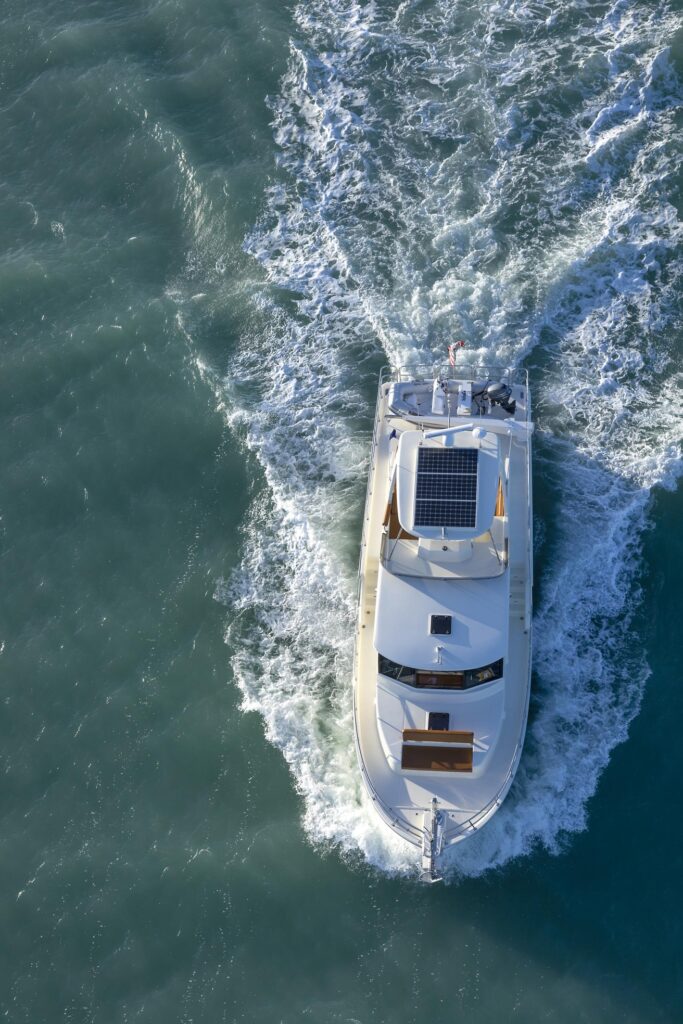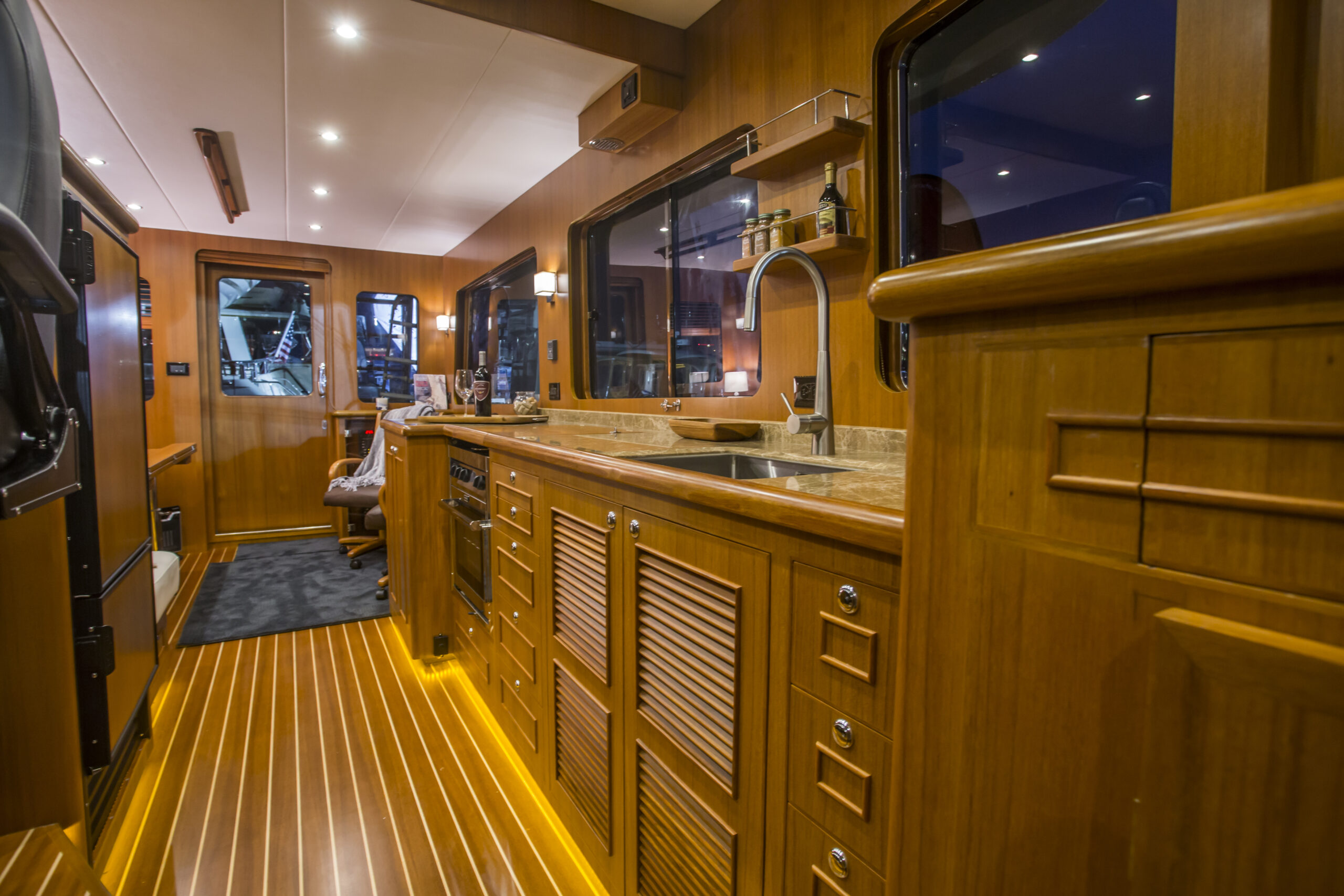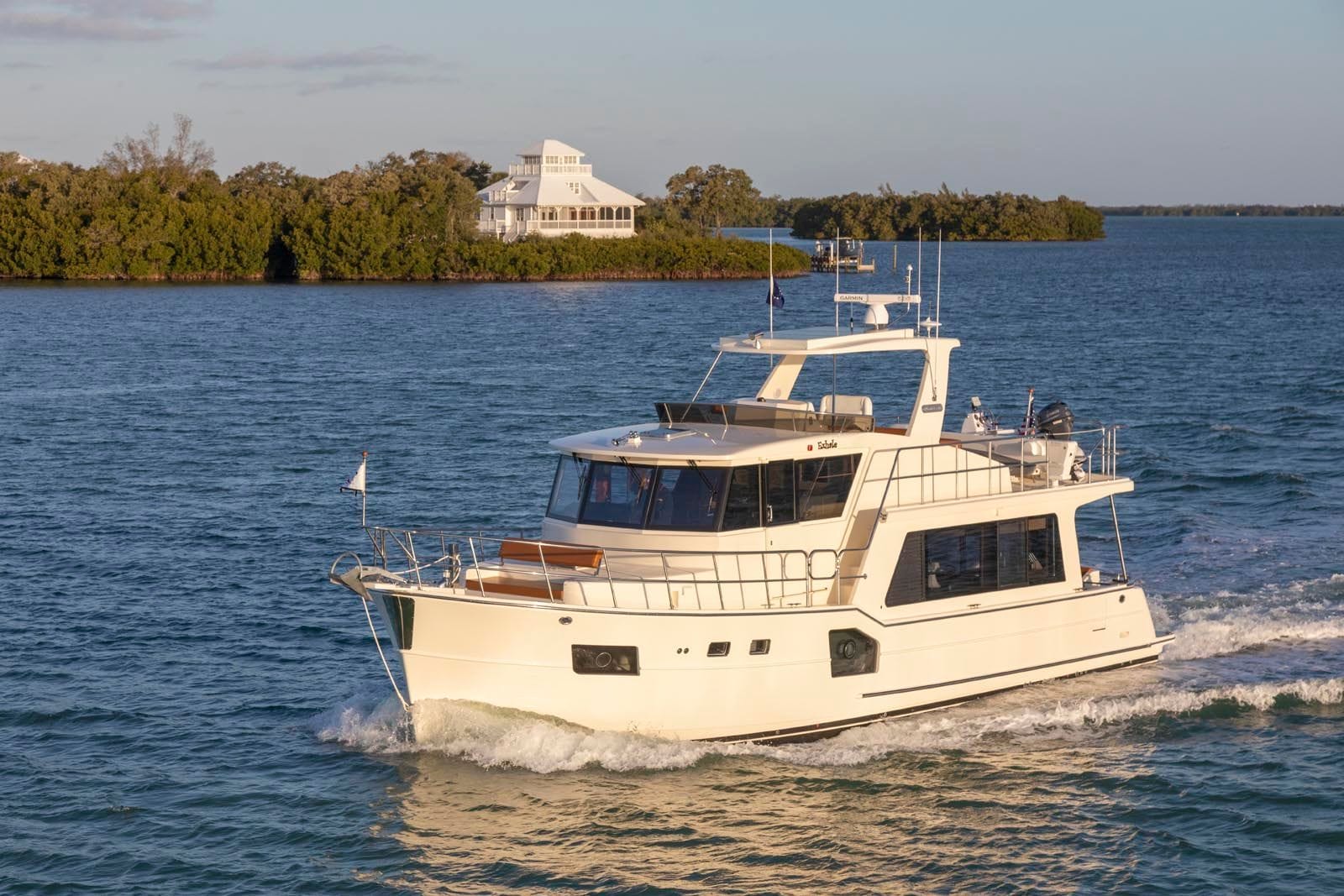The total cost to own a yacht depends heavily on the size of the vessel, how you plan to use it, and how much you intend to outsource versus manage yourself. Entry-level ownership for a new, well-equipped cruising yacht typically starts around $500,000 to $1 million, though that number can scale quickly with length, features, and finish quality. Beyond the build itself, there are significant recurring costs—everything from moorage, fuel, and insurance to crew, maintenance, and seasonal storage. As a rule of thumb, most owners should plan to spend 10–20% of the yacht’s value annually just to operate it responsibly.
It’s also important to think beyond the initial purchase. A yacht is a highly involved asset that requires ongoing attention, whether you’re handling things solo or relying on a management company. Upgrades, refits, documentation, and even lifestyle additions like tenders or water toys all contribute to the actual cost of ownership. At North Pacific Yachts, we help prospective owners understand the full financial picture from day one—so that the investment aligns with how they plan to use and enjoy their yacht long-term.

Total Cost of Entry into Yacht Ownership
Purchase Price by Yacht Size and Class
The purchase price of a yacht varies dramatically depending on size, type, and level of customization. Entry-level yachts in the 30–50 foot range typically range from $300,000 to $1 million depending on the brand, layout, and outfitting. Stepping up to mid-size custom or semi-custom yachts between 50–80 feet can easily place buyers in the $1.2 to $4 million range, especially when incorporating long-range cruising capabilities, high-end interiors, or larger engine packages. For superyachts and fully bespoke builds beyond 80 feet, costs often begin around $5 million and can exceed $50 million, depending on design, systems, and finish.
Custom yachts typically command higher prices than production vessels due to unique tooling, structural modifications, and artisan detailing. However, they also offer better design control, optimized use of space, and materials tailored to the owner’s priorities. Production yachts offer shorter timelines and lower entry costs but less flexibility for layout and finishes.
New Build vs. Pre-Owned Yacht Pricing
New builds offer the latest technology, layout personalization, and warranty coverage, but they come with a longer lead time and higher base cost. Pre-owned yachts can present value opportunities, especially if well-maintained, though buyers should budget for upgrades, refits, and possibly retrofitting to meet modern standards.
Older vessels may need significant investment post-purchase—engines, electronics, HVAC systems, and even cosmetic refreshes often factor into a refit budget. A pre-purchase survey helps identify expected costs before committing.
Financing and Payment Options
While some buyers pay cash, marine financing is common, especially in the 30–80 foot segment. Most lenders require 20–30% down and offer terms between 5 and 20 years, with interest rates influenced by credit score, vessel type, and loan size. For yachts over $1 million, commercial marine lenders or private banking relationships may be needed.
Cash buyers benefit from lower insurance premiums and reduced documentation requirements, but financed builds may offer tax efficiencies if structured through a business. Understanding these implications early helps buyers structure ownership for both affordability and compliance.
Ongoing Operating and Ownership Costs
Annual Operating Budget Estimates
Annual operating costs typically range from 10% to 20% of the yacht’s value. For a 50-foot cruising yacht, this could mean $100,000–$200,000 annually. For larger vessels, especially those with full-time crew, budgets can climb to $500,000 or more. The breakdown includes dockage, crew salaries, fuel, insurance, routine maintenance, and more.
Owners often underestimate the impact of operating frequency. Yachts used seasonally or full-time have vastly different cost profiles, particularly in fuel, wear-and-tear, and service schedules.
Crew Salaries and Professional Services
Yachts over 60 feet often require at least a captain, and larger yachts may require a full-time crew including deckhands, stewards, engineers, and chefs. Crew salaries vary widely, but an experienced captain alone may earn $80,000–$150,000 annually. Add insurance, provisioning, uniforms, and training, and costs scale quickly.
Some owners choose yacht management companies to oversee hiring, logistics, scheduling, and compliance. While that adds overhead, it reduces owner workload and ensures consistent operations.
Dockage, Storage, and Marina Fees
Dockage costs depend on vessel size and location. Prime marinas in the Mediterranean, Caribbean, or Florida can charge thousands per month for slip rental, especially for vessels over 60 feet. Transient docking fees at peak-season destinations can be $5–$10 per foot, per night. Haul-out and winter storage—especially in colder climates—must also be budgeted annually.
Marinas with lift capabilities, service access, and protected slips generally carry higher fees but also offer peace of mind for owners investing in preservation.
Maintenance, Repairs, and Refit Planning
Routine maintenance includes oil changes, impeller replacements, anode swaps, and system inspections. Larger or older yachts may require more frequent intervention. Owners should plan for annual haul-outs and bottom painting, engine servicing, HVAC and refrigeration checks, and hull cleaning.
Unexpected repairs—like generator failure or damage to underwater gear—can be costly. Longer-term refits may include interior refreshes, electronics upgrades, or propulsion system overhauls. For high-end yachts, owners often plan refit budgets every 5–7 years to maintain resale value and operational quality.
Additional Ownership Expenses Often Overlooked
Insurance and Liability Coverage
Insurance premiums are based on vessel value, size, cruising area, and usage type (private vs. charter). For most yachts, premiums range from 1% to 2% of the hull value annually. High-performance yachts, those cruising internationally, or charter vessels carry higher risk profiles and associated costs.
Coverage typically includes hull insurance, third-party liability, pollution risk, and crew coverage. Owners should work with brokers familiar with their vessel type and region.
Fuel, Utilities, and Provisions
Fuel burn varies significantly—sailboats and hybrid propulsion systems have lower costs, while large motor yachts can consume hundreds of gallons per hour. In addition to fuel, yachts rely on shore power, watermakers, sewage pump-outs, and propane systems, all of which carry usage costs.
Provisioning for owners and guests—especially during extended trips—can also be significant, depending on meal quality, location, and frequency.
Legal, Compliance, and Registration Fees
Registration and compliance costs depend on vessel size, flag state, and intended use. U.S.-based yachts must comply with Coast Guard documentation, while international yachts may require CE or MCA certification. There are also costs related to safety inspections, compliance upgrades, and legal fees for creating ownership structures (like LLCs or offshore entities).
If chartering is a consideration, additional regulatory requirements, licensing, and documentation will apply, increasing costs upfront but potentially creating income opportunities later.

Optional Costs That Influence the Experience
Luxury and Customization Features
Personalization adds significant value to the onboard experience—and cost. Stabilizer systems, advanced AV setups, dynamic lighting packages, and high-speed satellite internet are increasingly popular among owners. While these upgrades improve comfort and usability, they can add tens or even hundreds of thousands of dollars depending on the systems selected.
Interior design is another major cost variable. Owners working with professional designers often invest in premium materials like Italian leather, rare hardwoods, or imported stone. Custom cabinetry, embedded lighting, and built-in furniture raise the level of craftsmanship but also require longer build times and greater technical coordination. Artwork, soft goods, and décor are often selected to align with a yacht’s theme, contributing both aesthetic and emotional value.
Toys, Tenders, and Add-Ons
Modern yachts are often accompanied by a fleet of toys—tenders, jet skis, kayaks, dive compressors, and even submersibles. A quality RIB tender alone can cost $50,000–$200,000 depending on size and propulsion. Dive systems, fishing gear, and recreational watercraft enhance guest experience but also increase annual maintenance budgets.
Storage and launch systems like hydraulic garages or cranes require early design planning and add to the vessel’s weight and complexity. These features also require routine upkeep, especially when stored in saltwater environments.
Owner Travel and Crew Support
Beyond yacht expenses, owner travel to and from the vessel adds to the overall budget. Private air travel, hotel stays, and ground transfers may be required depending on the yacht’s location and the season. Likewise, moving crew between regions or rotating staff increases logistical costs.
For globally cruising yachts, many owners rely on on-shore concierge support for itinerary planning, customs clearance, and provisioning. These services make the experience smoother but add line items to the ownership ledger.
Cost Ranges Based on Ownership Profile
Budgeting for Owner-Operated Coastal Cruisers
For smaller yachts under 50 feet operated by the owner, total annual ownership can range between $25,000 and $75,000. These yachts often require minimal crew or can be operated entirely by the owner and family. Maintenance, dockage, and insurance make up the majority of costs, and upgrades can be paced out over time.
This profile fits owners who enjoy hands-on involvement and use their yacht seasonally or on weekends. With disciplined budgeting and proper maintenance, this is the most cost-efficient way to own a yacht.
Costs for Mid-Range Luxury Cruising Yachts
Yachts between 50–100 feet offer increased space, range, and comfort—but they also introduce new cost dynamics. These vessels often carry a part-time crew and feature more complex systems. Owners in this range should expect annual budgets of $100,000 to $350,000, especially if cruising internationally or chartering occasionally.
Refits, soft good replacement, and system upgrades typically occur every 5–7 years, and costs can quickly escalate if deferred. Owners should build those timelines into their long-term financial planning.
High-End and Charter-Ready Superyachts
For yachts over 100 feet, the threshold for ownership rises significantly. Budgets of $500,000 to several million per year are not uncommon. Full-time crew, transoceanic operations, global compliance, and high expectations from guests or charter clients all contribute to increased complexity and cost.
While some owners use charter income to offset expenses, achieving true profitability is rare. These yachts are often best suited for owners who prioritize experience, entertainment, or business use over financial return.
What Impacts Yacht Ownership Cost the Most?
Usage Patterns and Seasonal Habits
How you use your yacht is one of the most influential cost drivers. Local use with seasonal lay-up requires less fuel, crew time, and provisioning. Full-time use or international cruising increases operational hours, wear-and-tear, and insurance exposure. Many owners only use their yacht 6–8 weeks per year, which makes cost-per-hour significantly higher if the vessel sits idle.
Yachts stored in water year-round also incur more maintenance than those hauled and stored off-season, especially in saltwater environments.
Location of Home Port or Base
Location matters. Operating out of high-demand coastal regions like the South of France or South Florida means paying premium rates for moorage, service, and support. Some owners choose to register or store their yachts in tax-friendly or lower-cost jurisdictions to reduce the financial burden.
Currency fluctuations, VAT exposure, and cross-border regulations all influence how much it costs to operate a yacht in various global regions.
Personal Expectations and Tolerance for Delegation
The more you expect from the experience, the more you should budget. Owners who demand 5-star finishes, chef-prepared meals, and white-glove service from a full-time crew will have higher monthly expenditures than those who treat their yacht as a casual weekend cruiser.
Self-managing your yacht is possible for many experienced owners, especially on smaller vessels, but it comes at the cost of time and effort. Outsourcing to a management company adds convenience—but also adds 5–10% to the annual budget, depending on services rendered.

Contact Us
At North Pacific Yachts, we’re here to make your journey to owning the perfect yacht seamless and enjoyable. Whether you’re looking for expert guidance on model specifications, insights into custom build options, or simply need a few questions answered, our team is ready to assist. With years of experience in yacht building, we’re dedicated to understanding your unique vision and helping you navigate the entire process with ease. Reach out to us by email at info@northpacificyachts.com for personalized responses to all your inquiries.
If you’d prefer a conversation, we invite you to give us a call at 1-877-564-9989. Speaking directly with our experienced team can provide immediate answers and professional insights into everything from specific build features to delivery timelines. At North Pacific Yachts, your satisfaction is our top priority, and we’re here to ensure you’re confident and informed at every step of your yacht ownership journey.


